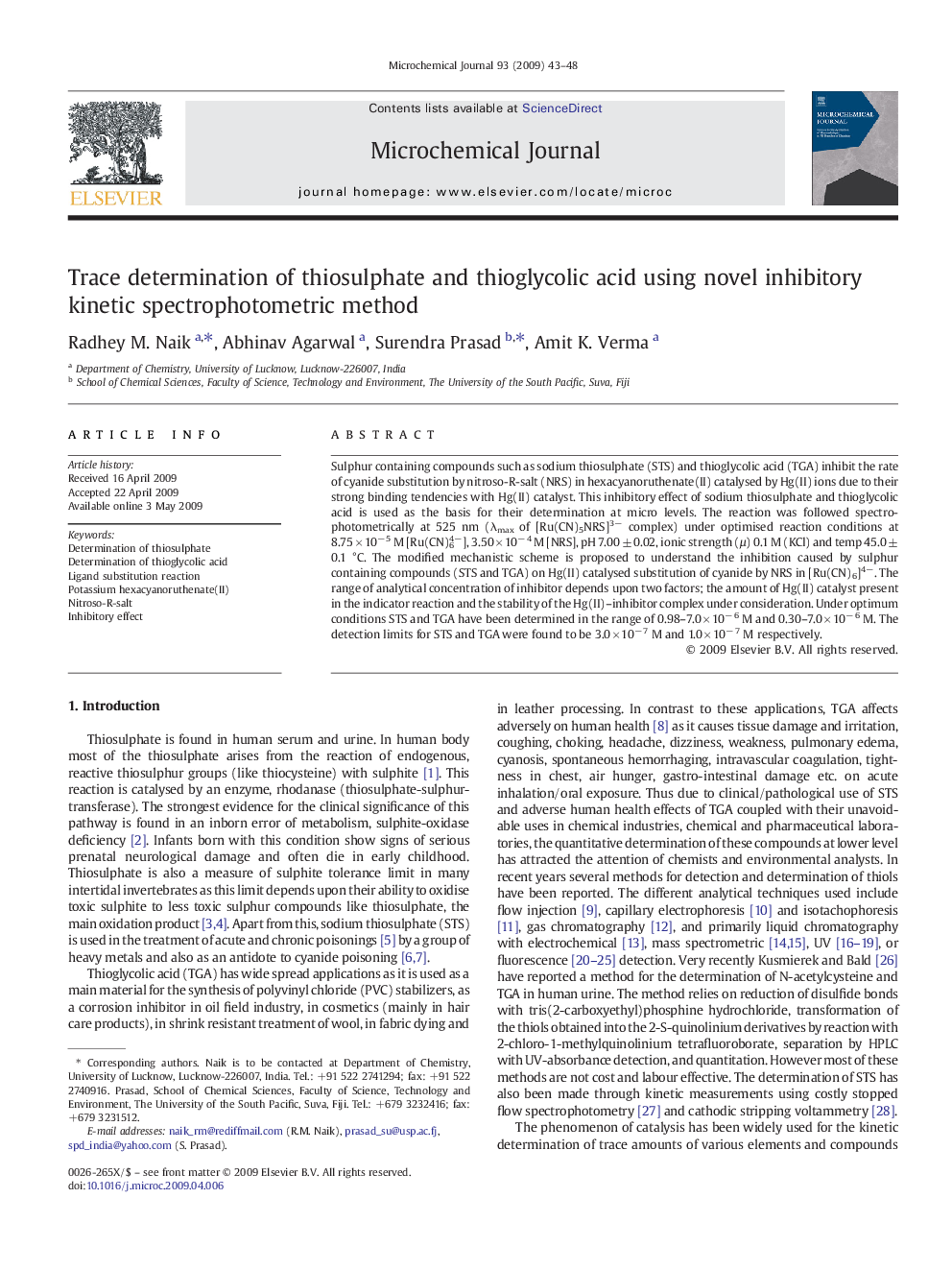| Article ID | Journal | Published Year | Pages | File Type |
|---|---|---|---|---|
| 1228480 | Microchemical Journal | 2009 | 6 Pages |
Sulphur containing compounds such as sodium thiosulphate (STS) and thioglycolic acid (TGA) inhibit the rate of cyanide substitution by nitroso-R-salt (NRS) in hexacyanoruthenate(II) catalysed by Hg(II) ions due to their strong binding tendencies with Hg(II) catalyst. This inhibitory effect of sodium thiosulphate and thioglycolic acid is used as the basis for their determination at micro levels. The reaction was followed spectrophotometrically at 525 nm (λmax of [Ru(CN)5NRS]3− complex) under optimised reaction conditions at 8.75 × 10− 5 M [Ru(CN)64−], 3.50 × 10− 4 M [NRS], pH 7.00 ± 0.02, ionic strength (µ) 0.1 M (KCl) and temp 45.0 ±0.1 °C. The modified mechanistic scheme is proposed to understand the inhibition caused by sulphur containing compounds (STS and TGA) on Hg(II) catalysed substitution of cyanide by NRS in [Ru(CN)6]4−. The range of analytical concentration of inhibitor depends upon two factors; the amount of Hg(II) catalyst present in the indicator reaction and the stability of the Hg(II)–inhibitor complex under consideration. Under optimum conditions STS and TGA have been determined in the range of 0.98–7.0 × 10− 6 M and 0.30–7.0 × 10− 6 M. The detection limits for STS and TGA were found to be 3.0 × 10− 7 M and 1.0 × 10− 7 M respectively.
